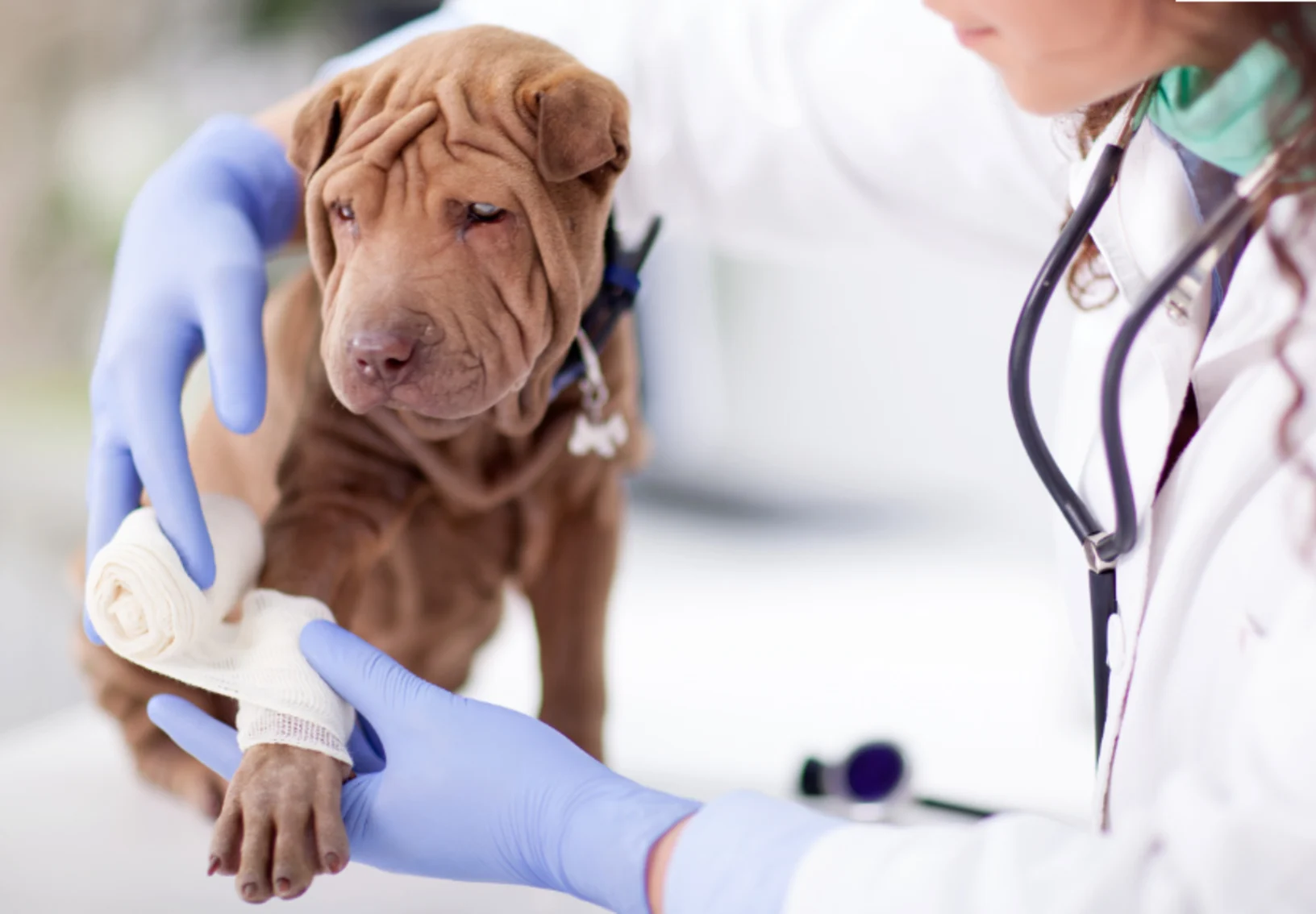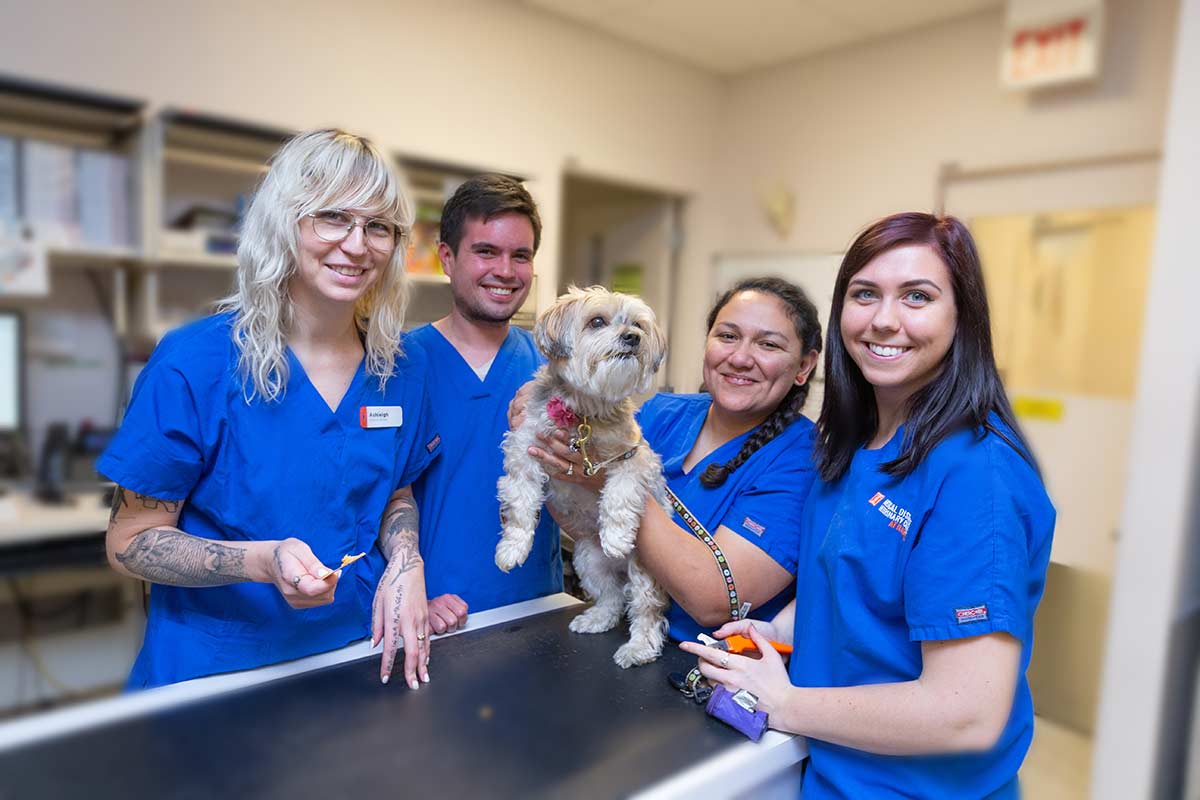When to Seek a veterinary cardiologist near me for Congenital or Acquired Heart Issues
When to Seek a veterinary cardiologist near me for Congenital or Acquired Heart Issues
Blog Article
Everything About Veterinarian Surgery: Recognizing the Relevance of Professional Take Care Of Your Animals
Veterinary surgical treatment is an essential element of pet dog medical care. It incorporates various treatments, from regular elective surgical procedures to immediate interventions. Comprehending the ins and outs of these surgical treatments can assist pet owners make notified decisions. The preparation, implementation, and recovery stages are necessary for making certain the well-being of animals. With proper expertise, proprietors can navigate the complexities of veterinary treatment. What factors should be taken into consideration prior to a pet dog goes through surgery?
Kinds of Vet Surgeries
When a pet dog calls for surgical intervention, comprehending the numerous kinds of vet surgeries can assist pet proprietors make notified decisions. Vet surgeries can be generally classified right into three primary kinds: optional, urgent, and emergency situation surgical procedures. Optional surgical procedures, such as spaying or neutering, are prepared procedures that are not immediately serious. Immediate surgical procedures, like those for international body removal, must be performed quickly however are not deadly in the minute. Emergency situation surgical procedures, such as those addressing extreme injury or interior bleeding, are crucial and require instant attention.Additionally, surgeries can vary in intricacy, ranging from minimally invasive laparoscopic procedures to extra substantial open surgical treatments. Each sort of surgery lugs its very own risks and recuperation processes. Understanding these groups permits pet owners to take part in meaningful discussions with veterinarians, causing much better end results for their precious family pets.
Planning for Your Animal's Surgical procedure
Preparing for an animal's surgery involves a detailed checklist to guarantee all basics are covered. Reliable communication with the veterinarian is important for comprehending the treatment and any type of needed pre-operative steps - emergency vet bellingham. Additionally, having clear post-operative treatment instructions will certainly help proprietors supply the finest support for their recovering family pets
Pre-Surgery List Essentials
Ensuring a smooth surgical experience for a pet dog calls for mindful prep work and focus to information. A pre-surgery checklist is important for pet proprietors to comply with. First, confirming the arranged surgical treatment day and time is crucial. Proprietors need to additionally verify that their pet has actually fasted according to the vet's guidelines, typically for 8-12 hours before surgical procedure. Gathering needed clinical documents, including inoculation history, is very important for the vet's evaluation. It is also a good idea to prepare a comfortable room at home for the pet dog's healing after surgical procedure. Owners need to have a plan for transportation to and from the vet clinic, making sure that the animal is safe and secure and comfy throughout the journey. Following these actions can substantially improve the surgical experience.
Interacting With Your Veterinarian

Effective communication with the veterinarian is crucial for an effective medical experience for family pets. Owners need to be prepared to discuss their pet's case history, including any type of pre-existing conditions, drugs, and allergic reactions. This information assists the veterinarian analyze dangers and tailor the surgical plan appropriately. Additionally, pet dog proprietors should ask questions relating to the treatment, anesthetic, and expected results to guarantee they fully recognize the procedure. Clearing up any kind of questions can alleviate stress and anxiety for both the animal and the owner. It is additionally vital to interact any type of behavioral modifications or issues observed in the animal leading up to the surgery. Ultimately, clear dialogue fosters trust and partnership, making certain that animals obtain the very best possible care during their surgical journey.
Post-Operative Treatment Directions
After discussing the procedure with the vet, family pet owners need to concentrate on post-operative treatment guidelines to help with a smooth recovery for their animals. These directions commonly consist of keeping track of the medical website for indications of infection, such as redness or discharge. Pet dogs may need to be kept one's cool and restricted to stop extreme movement that might interrupt recovery. Pain monitoring is important, so owners must comply with the veterinarian's guidance on carrying out medications. Furthermore, nutritional constraints may be encouraged to prevent stomach distress. Normal follow-up appointments are essential to assure appropriate healing and deal with any type of concerns. By sticking to these post-operative treatment directions, pet owners can significantly add to their animal's recuperation and general wellness.
The Surgical Process Explained
The surgical process for animals incorporates critical actions that assure their safety and security and healing. Pre-surgery preparations are crucial for minimizing dangers, while post-operative care standards play an important function in promoting healing. Understanding these elements assists family pet owners browse the surgical experience extra successfully.
Pre-Surgery Preparations
Prior to an animal undergoes surgical procedure, several crucial preparations should occur to assure a safe and effective treatment. First, a thorough veterinary examination is important to analyze the animal's general health and recognize any type of prospective threats. This may consist of blood tests, imaging, or he has a good point other diagnostics. The vet will certainly additionally go over anesthetic alternatives tailored to the pet dog's certain needs. Furthermore, pet owners are typically instructed to withhold food and water for a defined time prior to surgery to reduce the threat of problems during anesthetic. It is essential for proprietors to supply a complete case history, including any medicines or allergies, making sure the surgical group has all essential information. Correct interaction and adherence to pre-surgery standards can considerably enhance the end result of the treatment.
Post-Operative Treatment Guidelines
Correct post-operative care is crucial for ensuring a pet's recovery following surgical procedure. After the procedure, animals should be checked very closely for any kind of signs of difficulties, such as extreme bleeding, swelling, or uncommon actions. It is necessary to follow the veterinarian's instructions relating to drugs, consisting of painkiller and anti-biotics. Animals need to be maintained in a quiet, comfortable setting to lower stress and promote recovery. Restricting activity is important; short, leashed strolls might be necessary, yet leaping or running should be stayed clear of. Routine follow-up appointments must be scheduled to analyze the healing process. In addition, the medical website should be kept clean and completely dry, with any kind of indicators of infection reported to a veterinarian immediately. Complying with these standards improves recuperation outcomes.
Anesthetic and Discomfort Management
Effective anesthetic and discomfort monitoring are important parts of vet surgical treatment, making sure that family pets stay comfy and risk-free throughout the treatment. Vets assess each pet's individual requirements, taking into consideration factors such as age, weight, health standing, and the type of surgery being performed.Anesthesia protocols generally include a mix of pre-anesthetic medications, induction representatives, and inhalant anesthetics, permitting exact control over the animal's degree of consciousness. Surveillance throughout surgical treatment is essential; vets continuously observe important indications to resolve any kind of possible complications promptly.Pain administration methods might entail opioids, non-steroidal anti-inflammatory drugs (NSAIDs), and anesthetics, customized to the family pet's certain circumstance. This multifaceted technique aids reduce discomfort and promotes a smoother medical experience. By prioritizing effective anesthetic and discomfort monitoring, veterinary experts enhance the general welfare of family pets undergoing medical procedures, guaranteeing they get the highest criterion of treatment.
Post-Operative Care and Healing
Complying with surgical procedure, the emphasis shifts to post-operative treatment and recuperation, which is important for guaranteeing a pet dog's secure go back to regular activities. During this duration, pet dogs call for a peaceful, comfy atmosphere to help recovery. Proprietors must very closely monitor their animals for any indicators of discomfort or uncommon behavior.Veterinary standards commonly include particular instructions associated with medicine management, injury care, and dietary changes. It is essential to stick to these recommendations to reduce problems and promote recovery. Pet dogs might need to be limited from vigorous tasks, such as running or jumping, throughout their recovery period (tplo surgery).Regular follow-up visits with the veterinarian permit monitoring of the family pet's progression and prompt modifications to the care strategy. Supplying emotional assistance and friendship can likewise boost a pet dog's recuperation experience, assisting to alleviate stress and anxiety. Overall, persistent post-operative treatment plays a substantial role in attaining a successful recuperation
Recognizing Complications After Surgical Treatment
Just how can family pet proprietors determine complications after surgical treatment? Understanding of particular signs is important for guaranteeing the well-being Website of family pets throughout recovery. Usual indications include too much swelling, soreness, or discharge at the surgical website, which may signify infection. Furthermore, consistent pain, indicated by whining or hesitation to move, need to trigger instant attention. Changes in appetite or water intake can also show issues; a reduction in these behaviors may indicate pain or distress.Moreover, family pet owners ought to check their family pets for any kind of unusual behavior, such as sleepiness or difficulty breathing, as these can be signs of major issues. Throwing up or looseness of the bowels complying with surgical procedure might require urgent veterinary analysis. Acknowledging these difficulties early can significantly impact an animal's healing process, highlighting the significance of alertness and punctual interaction with a vet for any kind of worrying symptoms.
The Function of Vet Specialists in Surgical Care
Vet specialists play a vital duty in making certain the safety and success of procedures for family pets, particularly adhering to surgery when checking and treatment are vital. These specialists include vets, vet technicians, and support personnel, every one of whom contribute specialized abilities to the medical process.Before surgery, vets perform detailed evaluations to evaluate the pet dog's wellness, ensuring that any underlying conditions are handled. During the procedure, the surgical group gives anesthesia, maintains clean and sterile atmospheres, and checks essential indicators, all crucial for lessening risks.Post-operative treatment is equally considerable; vet professionals click now observe for issues, manage discomfort, and overview proprietors on recovery practices. Their knowledge allows them to acknowledge very early indications of distress or infection, making sure prompt intervention. Ultimately, the collaborative efforts of veterinary professionals in medical treatment cultivate a safe environment, promoting the wellness of pet dogs throughout the surgical journey.

Often Asked Inquiries
How Do I Pick the Right Veterinary Doctor for My Pet dog?
Choosing the appropriate vet cosmetic surgeon involves looking into certifications, reviewing reviews, and examining the facility's setting. It is necessary to review the doctor's experience with certain procedures and their interaction design when making a decision.
What Are Common Misconceptions Concerning Veterinarian Surgeries?
Common mistaken beliefs regarding veterinarian surgeries include ideas that they are always risky, unnecessary, or just for emergency situations. Many family pet proprietors underestimate the advantages of preventive procedures and the skill associated with veterinary surgical care.
Just How Much Will My Pet's Surgical procedure Expense?
The expense of a pet dog's surgery can differ substantially based on elements such as the sort of procedure, the vet's experience, and geographic location (veterinary cardiologist near me). Normally, expenditures range from a few hundred to numerous thousand dollars

Can My Pet Dog Consume Before Surgery?
Before surgical procedure, it is usually suggested that family pets refrain from eating for a particular period. This fasting helps in reducing the danger of complications during anesthetic. Proprietors ought to consult their veterinarian for precise directions tailored to their pet's needs.
What happens if My Animal Has Pre-Existing Health Issues?
When an animal has pre-existing health and wellness problems, it's essential for the vet to analyze these variables before surgical treatment. This assessment guarantees ideal safety measures are taken, reducing threats and maximizing the pet dog's overall safety throughout the treatment.
Report this page